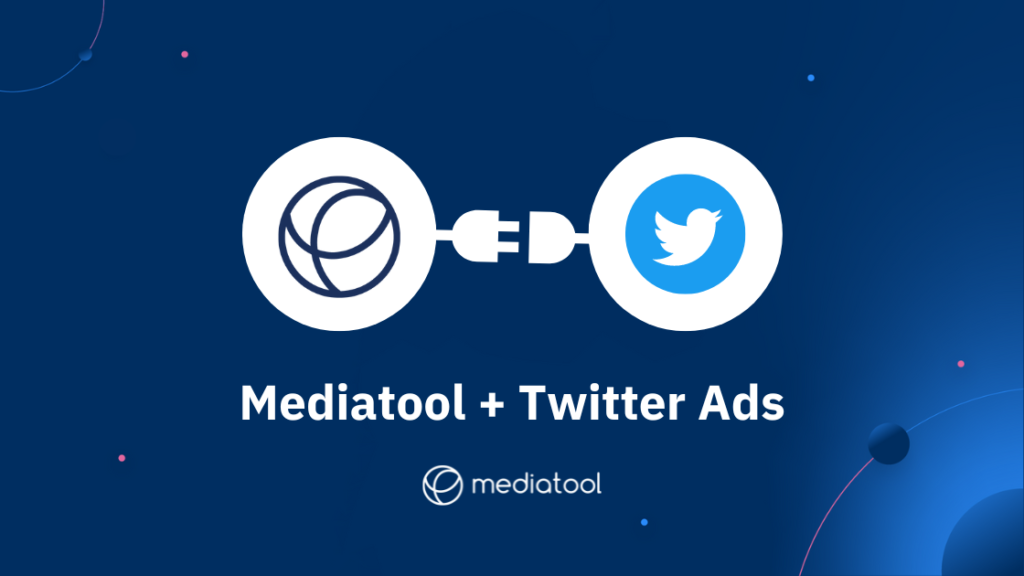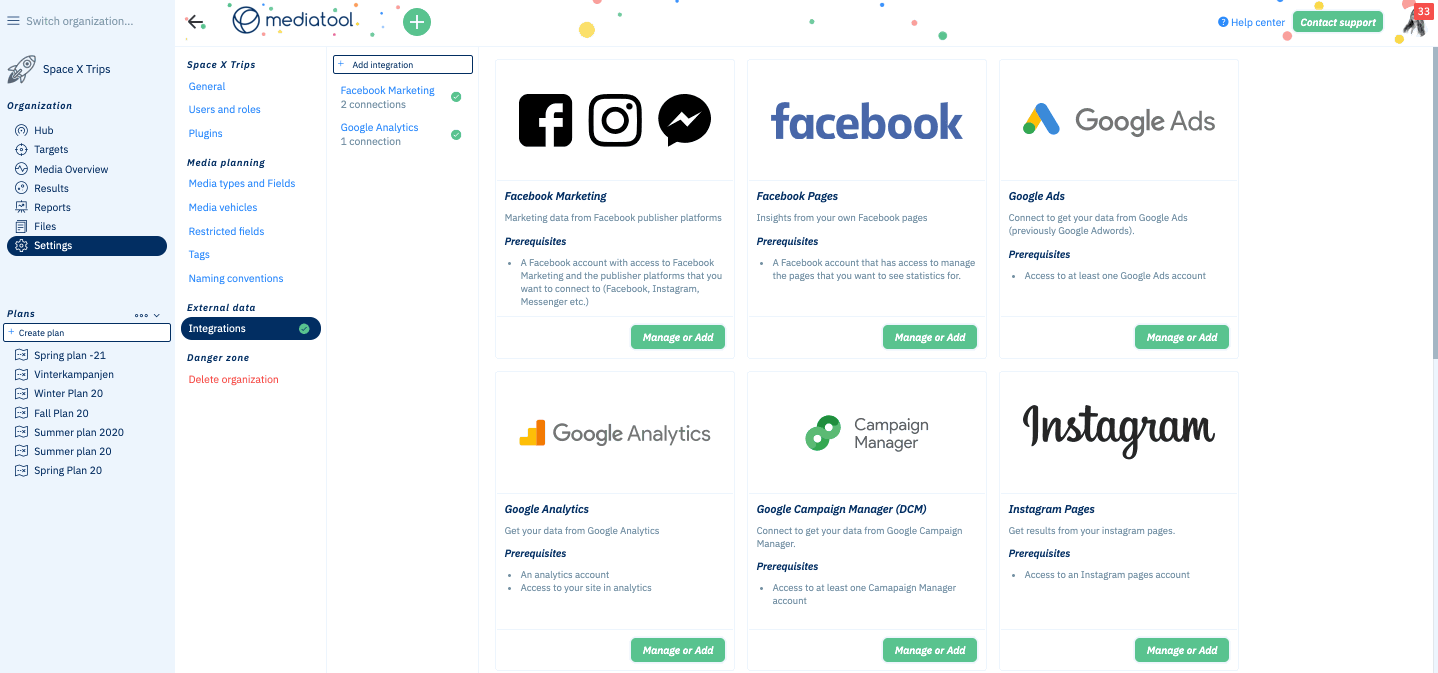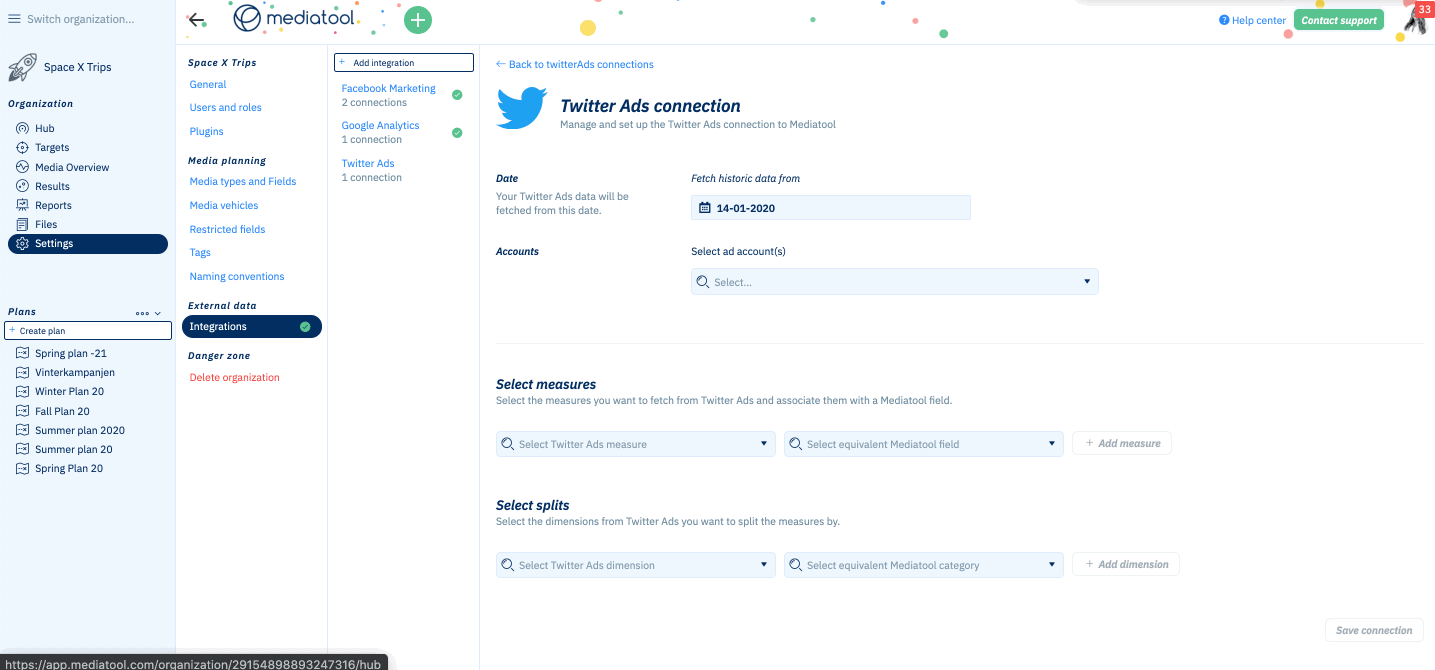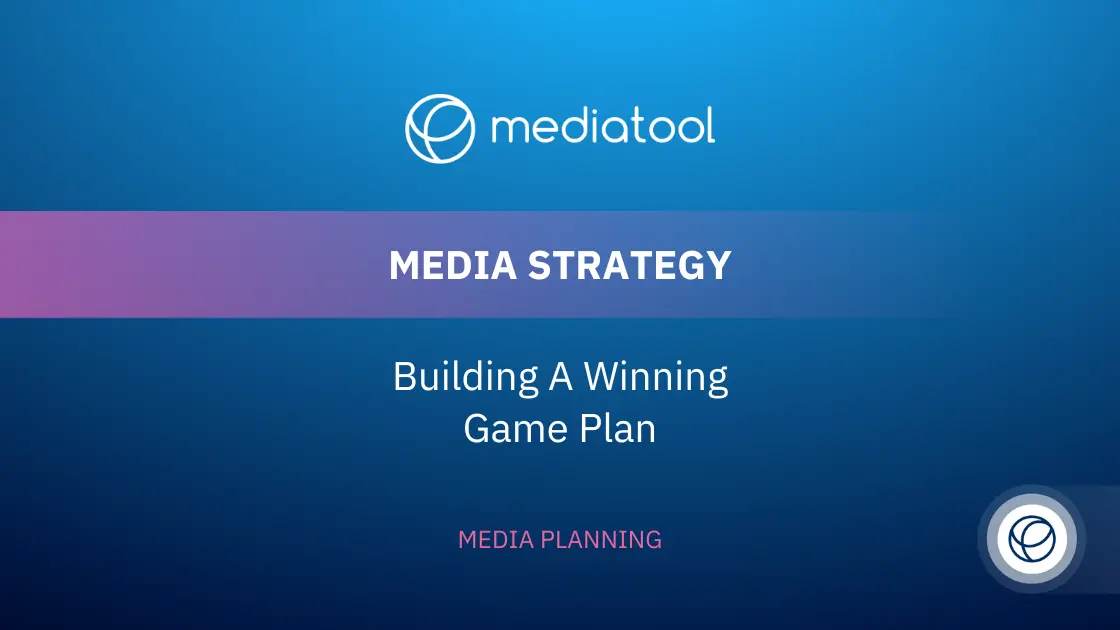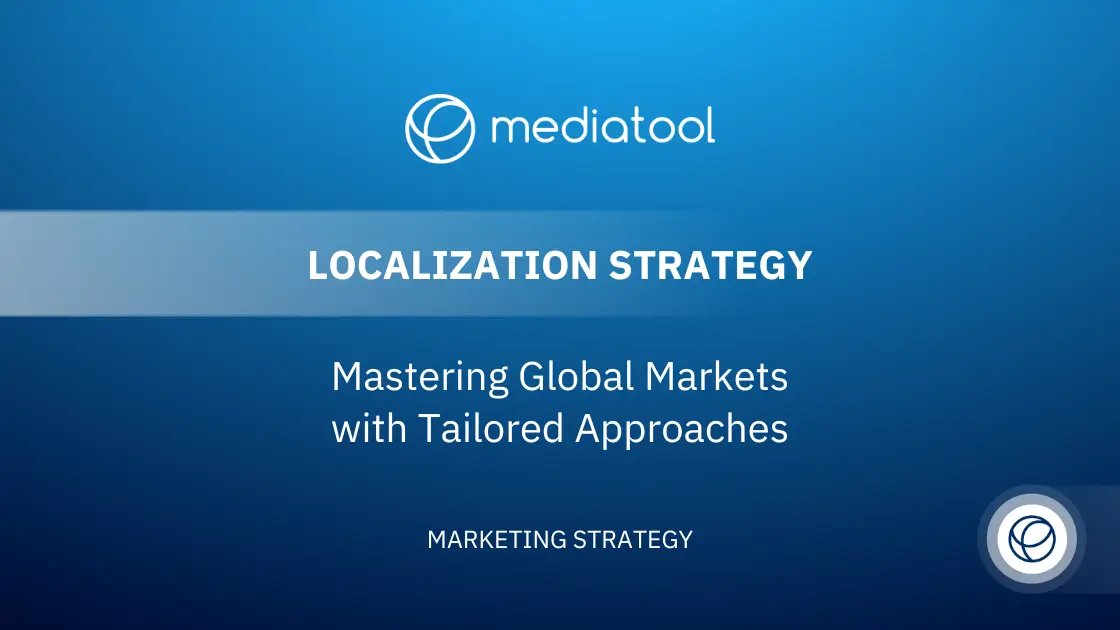There are millions of Tweets posted each day on Twitter, which offers great opportunities for brands, but without Twitter Ads can result in them getting lost in the noise. Compared to other social media networks, Twitter’s advertising stack is fairly new and in an app that focuses on organic interaction, it can take some trial error to find what works.
Wouldn’t it be great if you could get real-time reports on how your Twitter Ad campaigns are going? Enter our new integration! In a few easy steps integrate Twitter Ads into your Mediatool account and get instant reports on how your campaigns are performing.
How to connect Twitter Ads with Mediatool
1. Set up the connection
In your Mediatool account navigate to “Settings” in the left side panel. Under the “External Data” header select “Integrations”.
Here is where you can set up and manage all integrations available to you. Scroll to Twitter Ads and click “Manage or Add”. This takes you to the platform page where you click “Add connection”.
You’ll see a popup where you need to login to your registered Twitter account.
2. Choose reporting data
A great feature of Mediatool Integrations is the ability to pull historical data into reports as far back as you require, giving you visibility and enabling you to generate YoY data.
Simply select what date you want to pull the data from and link the ad account.
3. Customise measurements or use our templates
Now we’re getting into what information you need for your reports. You can use one of our templates where we’ve created the reporting elements for you, or customise your own.
We understand that you might not need all the data that Twitter offers so you can select the measurements you care about the most.
Select the “Twitter Ads measure” from the drop down menu (e.g. “Impressions”) and the “equivalent Mediatool field” from the right hand menu. Then click the green “Add measure” button on the right.
The naming convention Twitter uses might differ slightly from the Mediatool field. This is to standardise the reports in Mediatool from other platforms who might use different taxonomy for the same measure.
4. Select dimensions to track
To complete your report, you must choose the “Split” or ‘Dimensions” you want to track for each measure. For example, from the Measure “Impressions” the Split or Dimension might be the “Device Type”, which shows whether users engaged with the Ad on Desktop or Mobile.
Click “Select Twitter Ads dimension” from the dropdown box and then the “equivalent Mediatool field”. Don’t forget to click the “Add Dimension” button when you’re done.
Next Steps
Once you’ve added in all the Measures and Dimensions click “Save connection”.
You’ll then see a button that says “Create Dashboard” which will automatically generate one for your Twitter Ads integration. Et voila, you’re all set!
Don’t worry if you’ve missed or need to go back and edit something, you can always go back and add another connection or reach out to our support Team to do it for you.
Mediatool’s Integrations can save you and your team hours and gives you more time to work on the good stuff. Interested in our other Integrations? Click here to read more.
